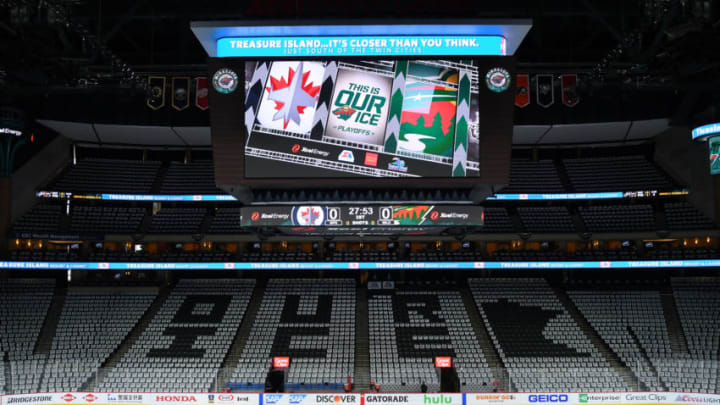
#3 – Kyle Brodziak, and a Draft Pick
At the 2009 NHL Entry Draft, the Edmonton Oilers were looking to acquire some earlier round draft picks while clearing some forward space. They found a willing trade partner in the Minnesota Wild, but it didn’t work out in the Oilers best interests.
Minnesota sent a 4th Round and 5th Round Draft Pick in exchange for the rights to restricted free agent forward Kyle Brodziak and a 6th Round Draft pick. On paper, a 4th and 5th round pick for a 6th rounder and a former 7th round pick is a bad deal, in actuality it turned into a steal.
Edmonton spent the fourth round pick on defenseman Kyle Bigos, a prospect who went to 4 years in the NCAA league after the draft and never got to play a single game at the NHL level.
The fifth round pick was then used on a goaltender, Olivier Roy, a highly ranked goaltending prospect who also never got a shot at the NHL level and most recently has been playing overseas in the German pro hockey league.
Kyle Brodziak would play in 6 full seasons with the Minnesota Wild, as a reliable faceoff center and consistent contributor on the scoresheet. In 446 games played Brodziak contributed 72 goals and 169 points, along with a 49% Faceoff percentage on over 6000 faceoffs taken.
Brodziak by himself would have been a steal, considering what Edmonton got in return, but he wasn’t the only piece.
Kyle Brodziak wasn’t the only piece Minnesota acquired in this trade. The 6th round draft pick from Edmonton became goaltender Darcy Kuemper.
Kuemper spent 5 seasons as a member of the Wild, he was dubbed the starter of the future, but never panned out that way. Darcy Kuemper provided 41 wins in 102 Games played as a backup with the Minnesota Wild.
His most lasting impact had to be what he did for the team in the 2013-14 playoffs. Kuemper came in during the second game of the playoffs to replace Ilya Bryzgalov, who was a late season trade acquisition, and stole the first round series for the Wild.
Unfortunately, Kuemper got injured in Game 7 of the first round, and was unable to return to the ice for the remainder of the playoffs. He started 2014-15 as the unquestioned starter, but after a terrible run of starts to begin the season was replaced before the season finished.
This one is unquestionable, Edmonton got nothing usable out of this trade and gave Minnesota 2 big pieces that were used as key parts of the team for many seasons. A huge win, but still not the top of our list.
